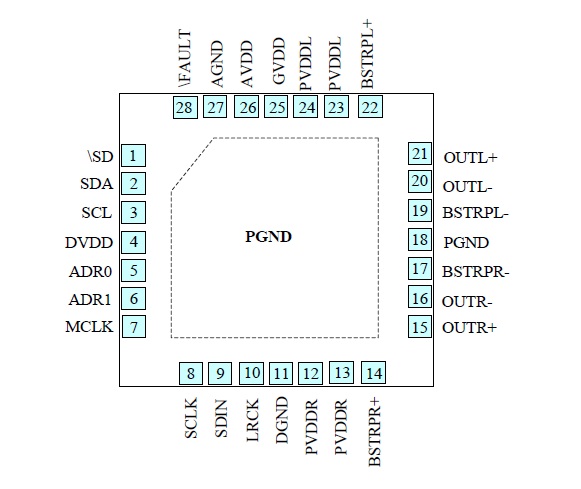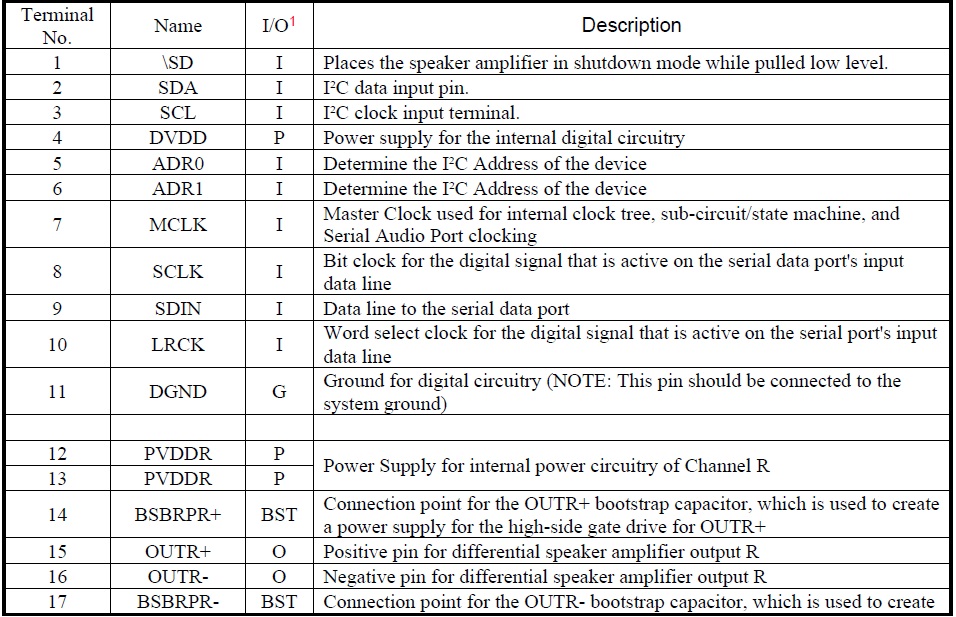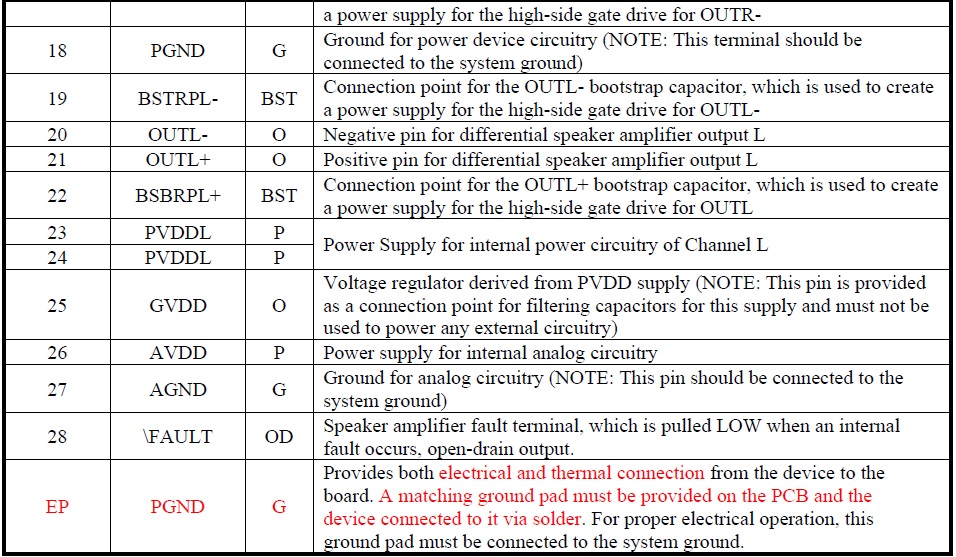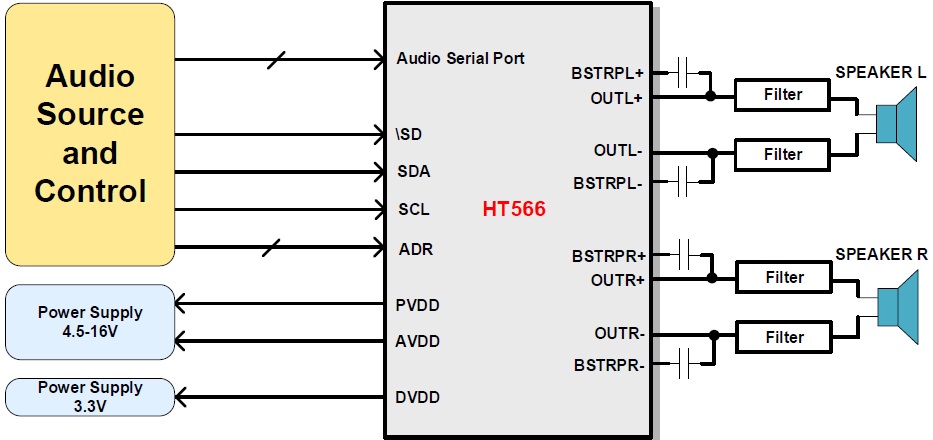
概述
The HT566 is a stereo Class D audio amplifier with multiple audio format port (I2S, LJ, RJ, TDM). It supports a variety of audio clock configurations. The outputs of the HT566 can be configured to drive two speakers in stereo BTL mode or mono PBTL mode.
The HT566 also includes hardware and I2C control modes, integrated digital clipper, spread switching frequency for Class D, and a wide power supply operating range to enable use in a multitude of applications.
An optimal mix of thermal performance and device cost is provided in the 120-mΩ RDS(ON) of the output MOSFETs. Additionally, a thermally enhanced 36-
Pin QFN provides excellent operation in the elevated ambient temperatures found in modern consumer electronic devices.
特点
・Power supply: -PVDD: 4.5V – 16V; -DVDD/AVDD: 3.3V
・Audio Performance
-BTL, 2×20W (PVDD=14.5V, RL=4Ω, THD+N=1%)
-PBTL, 24W (PVDD=15V, RL=4Ω, THD+N=1%)
-THD+N=0.04% (PVDD=12V, RL=4Ω, Po=1W)
-Noise: 85uV (Gain = 16dBV, A weighted)
・Low Quiescent Current in 1SPW mode
-12mA at PVDD = 12V, no filter
・Inductor-free Operation (Ferrite Bead) and EMC compliant for most cases
・Flexible Audio I/O
- I2S, LJ, RJ, TDM input
- 8, 16, 32, 44.1, 48, 88.2, 96, 192kHz Sample
Rates
・General Operational Features
- Hardware or Software Control mode
- 4 Programmable I2C Addresses
- Spread Switching Frequency for Class D
・Robustness Features
- Clock Error, DC, Over Current, Overvoltage, Undervoltage, and Overtemperature Protection
・Packages: Pb-free Packages, QFN28L-4*4
应用
• LCD 电视、OLED 电视
• 无线扬声器、智能扬声器(带语音助理)
• 条形音箱、有线扬声器、书架立体声系统
• 台式计算机、笔记本电脑
• AV 接收器、智能家居和物联网电器
引脚信息

引脚定义


典型应用图

-
产品型号:ACM8623
I2S输入15W双声道数字功放IC
-
产品型号:ACM8629
50W立体声/100W单声道、数字输入音频功放芯片,内置DSP多种音频处理效果
-
产品型号:ACM8625S
2×40W立体声、数字输入D类音频功放芯片、 内置DSP音效处理算法
-
产品型号:ACM8685
2×26W立体声/52W单声道、内置DSP虚拟低音等多种音频处理效果、数字输入音频功放芯片
-
产品型号:ACM8615
内置DSP、I2S数字输入20W单声道D类音频功放IC
-
产品型号:ACM8625P
I2S数字输入33W立体声D类音频功放芯片、内置DSP小音量低频增强等算法
-
产品型号:ACM8622
内置DSP音效处理算法、2×14W立体声/ 1×23W单声道、数字输入D类音频功放IC
-
产品型号:ACM8625
I2S数字输入26W立体声D类音频功放芯片、内置DSP小音量低频增强等算法
-
产品型号:ACM8628
2×41W立体声 /1×82W单通道数字输入功放、内置DSP小音量低频增强等算法


